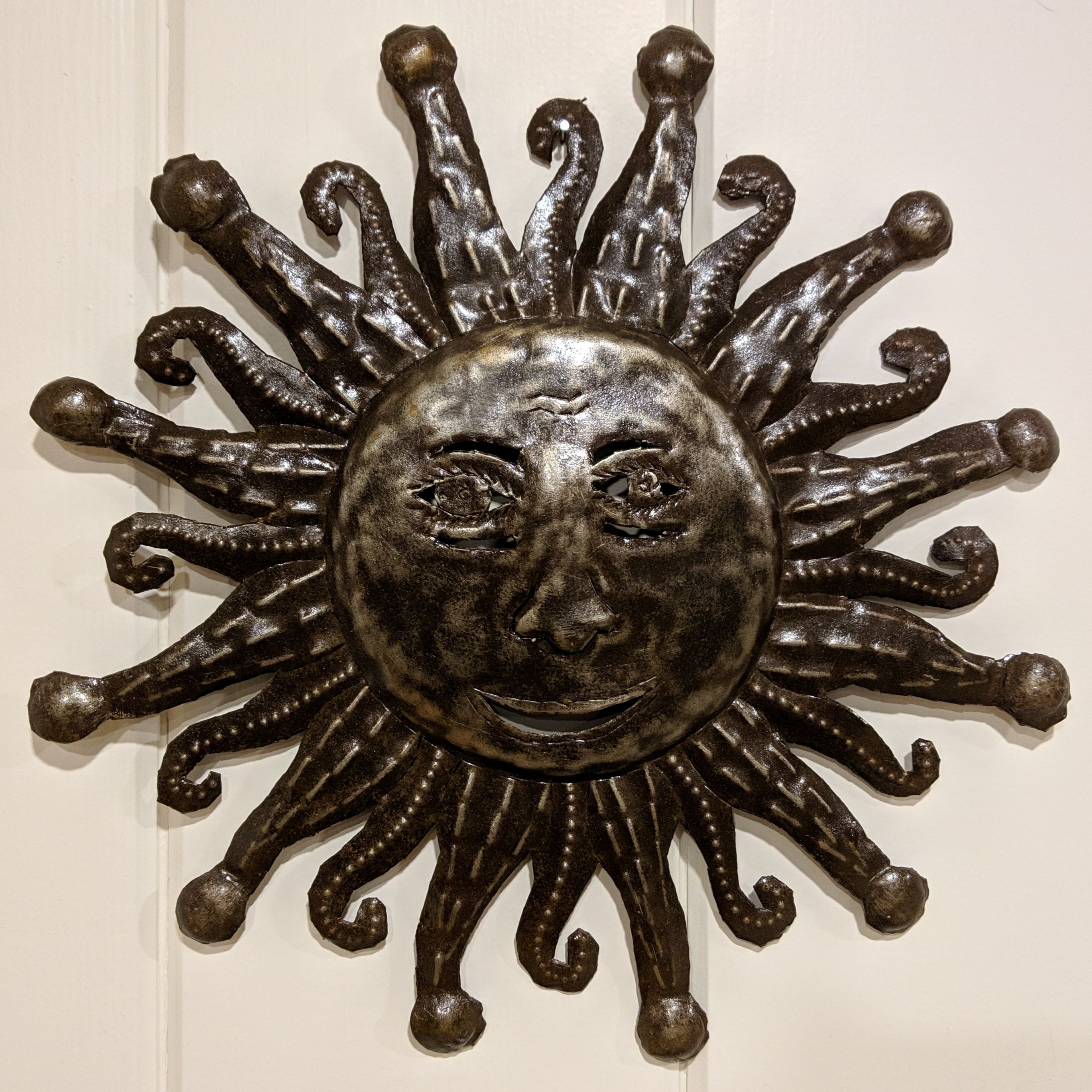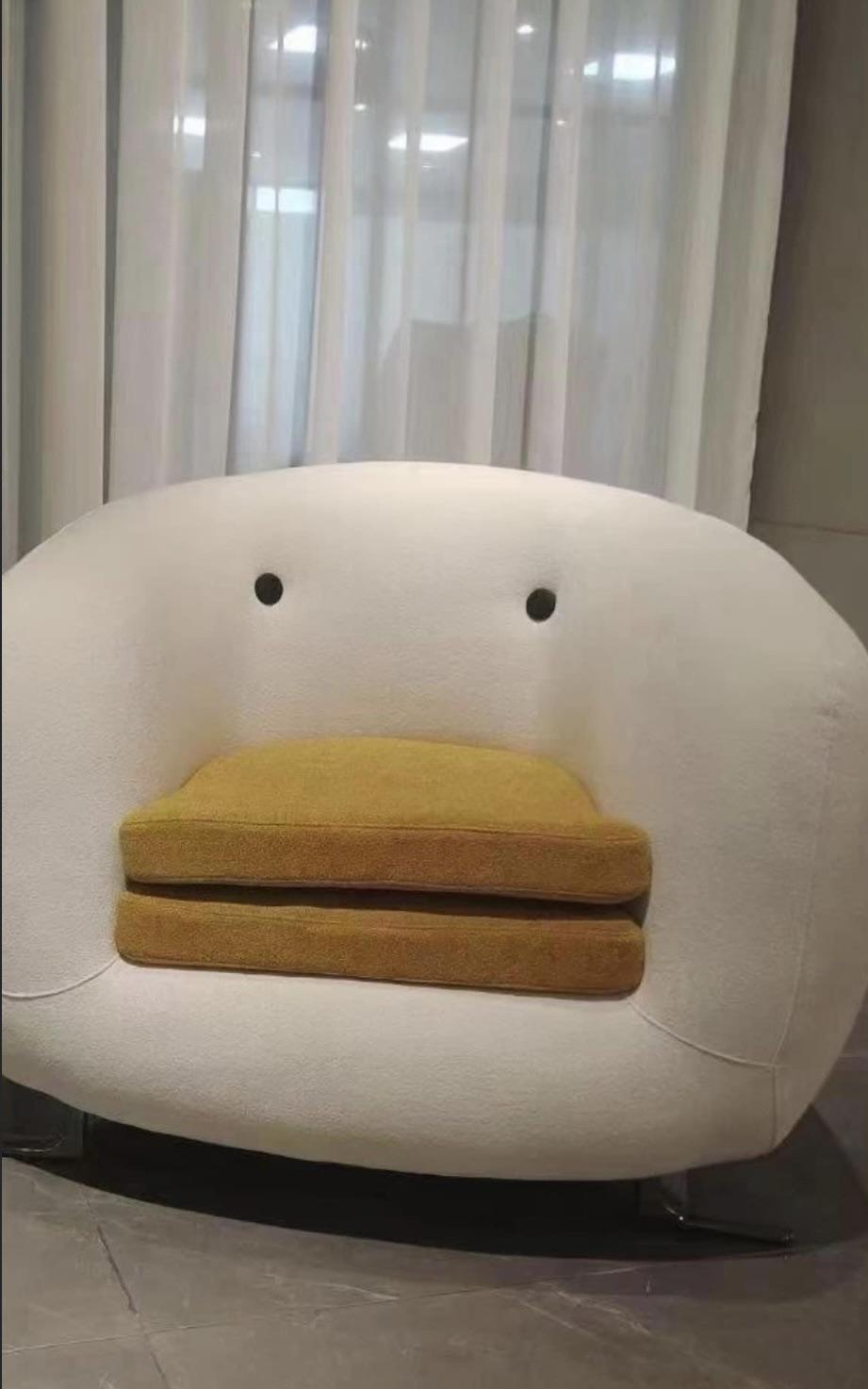Heat pumps can’t take the cold? Nordics debunk the myth::By installing a heat pump in his house in the hills of Oslo, Oyvind Solstad killed three birds with one stone, improving his comfort, finances and climate footprint.
It never ceases to amaze me how people don’t read past the title 🤦 There are people debating about -10 to -30C when the article clearly states that it works in those temperatures. Not only does it work, it’s twice as efficient as electrical heating at those temperatures.
I think it does, and it seems to work because of a defrosting feature that earlier models didn’t have. But I wouldn’t say it does so very clearly. Unless I missed it.
deleted by creator
Electric heat is not always 99.9% efficient, resistive heating is.
Heat pumps are more than 100% efficient(compared to resistive heating)
It’s not bs, because we are moving heat, not creating it. You thinking it is bullshit will not change the laws of thermodynamics. Try to think about it this way.
“Cold” is a made up human concept, it really is a lack of heat energy. The coldest is 0K, but even a Midwest winter is waaaaaay above that. Heat pumps (and all refrigerant-based systems) work by changing the phase of the refrigerant from liquid to gas to cool, or by compressing a gas to a liquid. This phase change takes energy from the surrounding air (think about computer duster, the can gets cold) and then pipes it inside, where it can be compressed to release the heat it just picked up from outside. In the summer you flip the reverse switch to cool your house.
Here is an explanation from someone much more eloquent than myself:https://youtu.be/7J52mDjZzto?si=sYlNlpvGnJs16lwk
Here is an alternative Piped link(s):
https://piped.video/7J52mDjZzto?si=sYlNlpvGnJs16lwk
Piped is a privacy-respecting open-source alternative frontend to YouTube.
I’m open-source; check me out at GitHub.
I just don’t buy this twice as efficient bullshit.
Do you understand how heat pumps work? The heat you’re drawing on is the the heat of the outside compartment on the outside, therefore the heat moved to the inside can be more than just the heat equivalent of the electric energy you put in. That’s how these achieve more than 100% efficiency, in general.
Now the trick to moving heat from a cold outside compartment to a warmer inside compartment lies in the compression. If you draw even a moderate amount of heat energy into your medium, then compress it, it will turn quite hot allowing you to dump heat into your warm inside compartment. Then as the medium flows out you let it expand and it turns really cold, cold enough that it can draw in heat from the cold outside.
You also have the waste heat being converted into useful heat, which only helps the efficiency. A standard resistive heater is almost all waste heat, so if you can use some of that energy to get more heat from elsewhere, that’s how you can get 100%+ heat efficiency.
So you’d rather trust your feelings? Just loon into it if you’re that skeptical.
Arrogantly uninformed. It’s an impressive combination
“at those temperatures”
well, to a heat pump even -40° is still 230K, which is plenty of energy to move around and work with. It may be cold to you, but to a heat pump it’s not.
Don’t you just love it when people decide things are true because they feel it’s true?
Good Lord - $2600 for a whole house system? I think that’s what my local (mid-Atlantic US) HVAC shop is getting for a single-room mini-split.
Wait until people find out about ground-source heat pumps and water heater heat pumps. What you get out of those is more consistent year round, too. It’s almost like leveraging technology has benefits over just burning carbon and hydrogen to make heat.
2600 is dirt cheap even by Euro standards, trust me.
Here in Italy a single room split would cost you around 1k to 2.5-3k depending on the brand.
A whole house system you’re probably looking at 10k and then some.
I got a quote in rural America for a single room minisplit, $10,300.
Absolutely bonkers.
That is absolutely bonkers. I put one in myself for my one room garage that I converted to a place to hang. Cost 720$ after tax for a Pioneer mini split. It’s entering its third year in use and I love it. That being said, I wouldn’t be so risky as to put my own in when its task was heating or cooling my home. Just my garage is my problem, the rest is my family, and so I paid. But I got a whole home solution, two floors, Carrier units, for about $15k.
I believe what you’re looking for is out there and not ridiculous price.
The guy you quoted just want to make his monthly paycheck on you alone, because that’s way over anything reasonable
Also in rural America. How did you get someone not to laugh at you when you asked? God I fucking hate the small mindedness around me, but I couldn’t stand the city either. I cannot find someone to put one in my house so I’m going to have to install it myself next summer.
Yeah, no. German here, if your house already is all prepared, ideally with large radiators or heated floors and you really just have to switch out the source of heat from whatever to a heatpump, then you’re maybe looking at 15k€ including work. The man probably collected a properly dimensioned subsidy.
You’re just repeating what all the gas installers keeep repeating so they don’t lose business.
Every House built after 1990 or houses that have had insulation makovers in the past 20 years are perfectly fine to heat with a heatpump.Yeah, I know, I have a heatpump. However, it’s just working so well at about a COP 1:4 at the moment because I’ve got flow temperatures of less than 30°C due to heated floors. If I needed 50°C I’d be down to about 1:2.5 right now and that’s not cost saving anymore compared to gas.
And I’ve checked, my exact model costs about 13k€ right now, make that 2k€ installation costs and we’re not far off.
$2600 is utter bullshit. I had several quotes for a 1000sf house, not a single one was under 16000 installed, after rebates. My payback period was going to be almost 20 years even against a medium efficiency gas furnace.
And this is why the comments here miss the point- sure, heat pumps nowadays can work that low but in a lot of places the payoff period is well outside what anyone is looking at.
Even the Diy mini splits, you’re paying $600 to $1000 easily for just one single unit.
Half of my house was 8k, the other side I’m planning to install myself because I don’t have that kind of money just waiting to be spent anymore.
Paid $6700 in May to replace mine.
Yeah similar in the UK. £3k for a single room mini split. £6k for a two room, etc. There’s no way you’re doing a whole house for less than bend-over money.
Wow that’s really pricey. Here in Malaysia a 2 HP mini split with inverter costs roughly RM 2400 including installation (around $500).
Granted the average salary here is much lower but it’s amazing how much the prices differ given that they all basically come from the same factory.
Hell yeah, we’ve got a heat pump and we’re in Canada where it can get to -40°C (which is coincidentally also -40°F) and that thing works like a beast. Fortunately we also have the cheapest electricity in North America so the decision was easy.
Electricity monopoly in the US = they can price gouge, and this is literally the only reason I installed a dual fuel system with a less efficient heat pump. The Eversource electricity price hikes last year probably would have meant I couldn’t afford to heat my home in the worst parts of winter here in Massachusetts.
This is how policies are killing the planet. Socialize electric utilities, upgrade the electric grid, subsidize the use of electric heat pumps so they’re actually affordable for all end users, and of course more people would adopt them.
As it is, I run my heat pump as much as I can, which is like 9 months a year. Better than only having gas heat at least.
The US has some of the lowest electricity prices in the world though. Only a couple pennies per kWh higher than Canada. And MUCH lower than pretty much all of Europe.
In 2020 (last year I could find from Canada specifically) Canada averaged 11.25¢ per kWh. The US averaged 13.04¢. The UK averaged 21.91¢, France averaged 19.91¢, Finland 20.56¢, Spain 28.77¢, and Germany 33.39¢.
https://www.electricity.ca/knowledge-centre/the-grid/customer/electricity-rates/
It’s more that Canada uses a LOT of hydro power which is cheap.
This is the problem I’m facing though:
Our electric rates went from 18¢ to 25¢ last winter with no warning. It’s not that our prices are particularly high for now, but rather that they’re unreliable. I didn’t feel secure installing an electric only system because of this, even though I could have gotten a more efficient system. The dual fuel allows me to toggle between the two as needed, which feels like the safer option for the next 15-30 years that I expect to have this thing.
Sucks because I’d really prefer to have one of those Mitsubishi hyperheat systems. But even with the less efficient system, I’m running in heat pump only mode in the to 0⁰C nights we’re seeing right now and it’s fine.
You made the most sensible choice and are dramatically reducing you gas use, so you should feel good about that! I have a new Mitsu hyper heat (Colorado here), but recognize it wasn’t the most cost effective system and ultimately just really wanted it. It’s bonkers how well it work though. We’ve only hit 10F this last weekend but it didn’t skip a beat. Looking forward to -10F. For most people, keeping a gas furnace for a few weeks a year, and using a smaller heat pump than you would spec if only using a HP makes a lot of sense. You’re not missing much (and some would argue that peak winter demand in an electrifying world is a big problem that has backup gives us more time to solve anyway).
Yeah, you did exactly what I wanted to do haha. I just love the Mitsu products so much. I had Mitsu mini-splits when I lived down in the Caribbean, and I’m a complete convert. I did install a supplemental Mitsu mini-split in the largest room in my house, which actually is so god damned efficient, it reduces the load on the central heat pump. The two combined get me through a really reasonable portion of the year. Those things are just amazing.
What’s your heat pump? I’ve been looking into them and I can’t find one that’s willing to say it works past about -15.
The Mitsubishi Hyper heat can work down to -13F, The absolutely best resource I’ve found for heat pump research is the NEEP database which will you give you actual BTU outputs at various ambient temperature readings: https://ashp.neep.org/#!/product_list/
 Also worth considering a geothermal heat pump depending on your geography, as then you have a guarantee of efficiency all year roundSecond the NEEP database. I’d just add that the lowest temps listed here aren’t the actual equipment minimums - each model has a cutoff temp where it will literally shit the bed (except ground source of course). For my mistu hyper heat, it’s -26F. Capacity will keep dropping after -13F though (where it’s still at like 80% I think).
Thanks for the website!
What’s NOT cheap in Canada? Genuine question.
Cellphone plans, internet plans, seriously look into the cost of living in Canada.
Telecoms have a stranglehold here, our cell phone and internet prices are some of the highest in the world (if not THE highest).
They also own some news and media companies which only makes it harder to bring about change
Electricity is also pretty expensive everywhere in Canada other than quebec
Manitoba has some of the lowest rates in the country
Yeah, it’s the 2nd lowest, but Quebec is still dramatically cheaper
Tim Horton. It’s cheap, but not cheap.
It depends on the model (and the price), I’m in Québec where we have -30°C (-22F) about every winter, my heatpump is mid-range, and works fine until -20C (-4F) so 95% of the time. It is set to 23C (73F) and it’s between 21-23 everywhere in the house. The electric baseboard are set to 21C (70F) as backup.
So yeah, heat pumps can works great in winter, no problem.
Also as written in the article, with defrosting and variable speed compressors, it is very efficient. Mine is Energy Star compliant, and act as air conditionner in summer.
How is this a myth? Nobody with more than two braincells thinks that heat pump heaters don’t work in the cold.
If we start comparing everything that idiots think to a mythological mystery worthy of note, we’ll be here for an eternity.
The heat pump I just had installed in SW Ontario hands over heating duty at -10C to the gas furnace
How much did it cost and what rebates are available? I’d love to say fuck Enbridge.
$12K for the heat pump and furnace. We’re expecting a $7K rebate (did the replacement before the audit because the old furnace died)
Damn that ain’t cheap. What’s the expected savings per year in reduced gas/hydro?
Edit - how quick is it expected to pay itself off
deleted by creator
I’m not sure, likely somewhere between 5-7 years.
We wouldn’t have done it if our furnace wasn’t shot. As a plus our A/C leaked it’s freon in the winter, so replacing it was an improvement as well.
You could have gotten a whole home mini split from senville for less and it works down to -30. My heatpump from 15 years ago only did down to -10.
I found all the HVAC guys in my area were still really pushing the heatpump and furnace combo because that’s what they knew and not what was best, cheapest or most efficient.
How does a mini split system work? Does it plumb into traditional ducting?
Edit: just looked them up. Also found out that a friend out East with an older, oil heater house (no central ducting) was quoted a mini split for their place at over $20K
Our place is a four bedroom, two storey with a basement. I wonder if a mini split with the requisite air handlers would be cheaper
On a side note, we have a West facing room with large windows that I have to run a portable AC and space heater in as it’s temp is always extreme vs the rest of the house. A mini split just for that room would be great
They are honestly pretty easy to install if you are at all handy. The smaller ones (like for a room) have minimal electrical needs and are something you could get an electrician buddy to do for a case of beer if you buy the parts off amazon. Depending on the brand they are varying levels of DIY but nothing a 5 min youtube video can’t teach you. All in for my house it was 6k and a saturday afternoon to get it done.
How many mini split heat pumps and air exchangers did you put into your place
Overall, we should be net $5K with an installer because of rebates, but it’s good to know cheaper alternatives are available
It’s not that people think they don’t work in the cold, it’s that they are less suited for the areas or days of extreme cold.
Which is why you have a backup system. I have a net zero house in Saskatchewan, Canada. My Carrier heat pump will operate to -15C, and switches to electric heating coils in the air handler if it’s colder outside. It’s a rather extreme climate here, but in most other places, you’d be fine with some baseboard heaters as backup.
It really depends on the type of heat pump. Air-sourced heat pumps generally don’t produce heat below -30C and below -10C they generally lose enough efficiency that you’re better off using electric baseboard heating.
My air sourced heat pump keeps my house warm just fine in the Finnish winter where temperatures of -30C aren’t unheard of. I’m not exactly sure how it works, but I assume there’s coils that’ll produce the heat by electricity if nececcary, making it at worst as efficient as direct electric heating, which is what I’d use otherwise. Here like every other house has a heatpump like that and I don’t remember hearing anyone ever complaining that they’re not working.
The argument is bullshit in totality. But… When the supplemental electric heating coils come on, it is less efficient ON THAT DAY, than the alternative electric options. But, like I said, in totality, it’s more effective over a month, and certainly better over the course of a year. It’s a matter of people with an agenda cherry picking the 9 days a year in which it is less efficient and pretending that the other 354 days don’t count.
When the supplemental electric heating coils come on, it is less efficient ON THAT DAY, than the alternative electric options.
It depends what you mean by the alternative electric options. Electric resistance heating is 100% efficient and that’s what my heatpump effectively is when it gets cold enough. It’s not less efficient than wall mounted electric radiators even when it drops to -30C. You just lose the efficiency of a heatpump for that time.
Exactly - people somehow fail to understand that Heat Pumps, by necessity, are always more efficient than 100% of an equivalent electric solution.
I suppose if electric heat is the primary option then sure. Around here though natural gas is pretty much ubiquitous and the cost per joule is a heck of a lot lower than electricity. About $6/GJ for natural gas, compared to about $42/GJ for electricity. Would need a pretty efficient heat pump to see the cost savings in my area.
There are heat pumps now that use gas to do the supplemental heat. Those are the best possible option. They are equally efficient to a gas furnace when supplementing, and even cheaper when not.
I’m sure there’s applications where that’s true, but then you’re essentially talking about having a gas furnace plus a heat pump, so you’re installation cost is close to the sum of both systems. Energy rates vary by region, but around here electricity is about 7 times the cost of gas, so a heat pump running at a coefficient of performance around 3 would still cost twice as much to run as a natural gas furnace, it would be cheaper to just turn off the heat pump altogether and only use that “supplementary” heat.
When I was looking at new heat pumps the hybrid ones were between 500 & 1000 more than the equivalent electric ones.
It’s not a sperate unit, it just has a gas heater in place of the electric supplemental coils.
Except that electric heating is always 100% efficient, and that’s what a heat pump falls back to. If anything it will still be more efficient than baseboard heating simply due to it having a fan to better distribute the heat (equivalent to an electric furnace with ducting). The only argument that makes sense is when comparing costs with other heat sources like natural gas, which is a whole other topic.
Interesting. A close friend is an engineer who designs HVAC systems (industrial but regardless knowledgeable).
He’s told me that the heat pump would pull more power on those days than an equivalent electric only system.
My heat pump definitely uses a lot of power when it’s cold.
I wish I had access to the gas based supplemental heating for it. Economically that seems like the best option.
Generally you’d have a backup heat source with an air-to-air heat pump for those really cold days like -15C and colder, like a gas furnace or a heating element unit inside (like with electrical coils). Air-to-air heat pumps are more efficient on warmer days, on colder days they would be less efficient but you’d still have a backup heat source so it would still “work”, so the article is still somewhat correct in that sense.
Also, electric baseboard heaters can be quite a bit louder than forced-air systems with a heat pump, so you’d still be better off with a heat pump in those cases.
It just comes from a fundamental misunderstanding of how the universe operates.
They say oh well it’s cold outside so how can it make it warm inside? They say this because they have absolutely no understanding of where the concept of a temperature comes from. They think that if it’s 10° outside then there is 10° of energy outside presumably out to some arbitrary distance, because some places are warmer, but they don’t really think that bit through. They don’t realise that’s not how it works.
MFers need a refresher on the concept of absolute zero.
my heart goes out to the three little birds
Feast your heart on this:
Better than 15 birds in 5 fir trees.
Their feathers were fanned by a firey breeze
It’s not so much a myth as it is old information that is no longer accurate
The heat pumps that were available 20-30 years ago weren’t effective/efficienct enough at low outdoor temperatures to be practical.
Not sure I would call this a “myth”. It’s just that technology has progressed to the point that it’s less of an issue.
Mine stopped working at 100% when it got <20*F and turned into a giant popsicle.
Was it necessary to kill birds th?
Birds aren’t real.
Yes. Goddamn dinosaurs biding their time until we kill ourselves off, just to build a new golden age of dinosaurs
I mean, it’s not about them not working, it’s the efficiency. Most models will switch to a normal electric heater, if they can’t extract anymore heat from the surroundings. At which temperature that happens, depends on your type of heat pump.
Not correct for modern heat pumps. They work down to at least -40F without switching to creating heat.
That’s why I said it depends on the type of the heat pump. Some can go really low, the cheaper ones not. At some point (the latest at -273.15C :D) they need to switch.
The overwhelming majority of even high end cold climate ASHPs do not function at -40 C/F. -20F, that’s doable.
So my question with heat pumps is more how much does humidity effect the efficiency? Where I live is high elevation, has cold winters, but the air is dry as fuck. Single digit humidity for a month wouldn’t be unusual.
My understanding is that heat pumps work best with humidity since moving moisture is part of how the heat is produced. When does a reasonably priced heat pump start falling off in efficiency?
They are just AC units in reverse. The biggest effect humidity is going to have is on how much condensation is going to form on the exterior radiator. That’ll form frost that’ll have to be melted in a defrosting cycle. That’ll decrease performance and efficacy. Low humidity should keep that to a minimum.
deleted by creator
Yeah it’s a bit shitty right now… I applied… 2k with the 7.5k grant (so the bare cost is 9.5k!). Not cost effective but… wanted to do my bit.
However, I couldn’t go ahead, it just didn’t make sense.
To get the grant all rooms must be heated, and the cost of required adaptation of my bathroom to add a radiator of the required size was somewhat eyewatering… Heat pumps must not cool, otherwise they’re not eligible, so I’m still on the hook for AC at some point (given how hot it’s getting) which is stupid given they’re basically the same tech. Planning rules state that heat pumps are only permitted development within a very specific set of conditions, and because of the noise they make I would have to get planning permission at my own expense (and my neighbours already complain if we talk too loud so likelihood of actually getting it very low).
And, specific to the installer I was using (Octopus)…
They wanted to install a 1mx1m water tank. That won’t fit in the airing cupboard (not even close) so they suggested the kitchen… making it difficult or impossible to open the back door… Their heat pump (daikin) is about 2m wide. My house is only 7.5m wide, you take off 1m each side for the legal thing where heat pumps have to be 1m from the neighbours boundary, space for the door, some drainage… the only position they could suggest was the middle of the back yard…
Hah, from Belgium I can relate with the nonsensical requirements for grants and the fact that heat pump units can be hard to install in row housing.
Sounds like the rules are stupid and only written for new construction or very deep renovations. It will almost certainly be more cost-effective to do your own thing, without government help.
I haven’t made the plunge yet, but a reversible mini-split is probably what you want. They’re much smaller, wall-mountable units that require no change to the existing heating system (and are easily DIY’d if you can run the electrical circuit yourself). You can put one ventilation box per floor, which should cover the vast majority of your heating needs. Sure, it might not have the capacity to heat your house to 20°C when it’s -5°C outside (unless your house is really well insulated), but perfect should not be the enemy of good. Not turning on the gas boiler at all on mild winter days is already a big win.
For tap water I believe there are models that have about the same dimensions as a standard water tank but with a heat pump integrated. Can’t say I looked too deep into that though.
It’s not that they can’t heat your home to 20°C in the winter on those occasions where it’s freezing outside, it’s just that the heat output decreases as it gets colder, while the heat loss of your house increase, and your size your unit(s) for a specific temperature.
Our air to air system still has a cop of just above 4 at -7°C and 3 at -15°C. It manages to heat our 1960 house just fine (decently insulated, but not to modern standards). Even on those rare occasions the temperature drops that low in Belgium, we should be fine.
In a more modern house, the system could’ve been cheaper thanks to the better insulation.
No that’s just my shitty heat pump. Sigh…
I bought into the heat pump hype until I bought a house with a furnace. Up until then I lived in apartments with heat pumps. I was stunned about how much better it was than any place I’ve lived before. It was used for it taking forever to get warm and always feeling colder than the thermostat would indicate. With a furnace it got warm quick, and it truly felt warm once it reached temperature. My power+heat bill was significantly lower per sqft than my power bill in my apartment.
I’ve lived in the Midwest, the Mountain West, and the South. I experienced the shortcomings of heat pumps in every place.
This article, which I believe to be geared at convincing US readers that heat pumps are great, also does some things that are extremely disingenuous.
For one, most heat pumps in Norway are geothermal heat pumps. Those are extremely different units that are well known to both be more energy efficient and function at much lower temperatures than air source heat pumps that are typically pushed in the US. The example where they interview a guy with an air source heat pump seems like an almost intentional misdirection.
Second, the author uses a comparison to electric furnaces. That has been widely known for years to be hilariously inefficient. As such it’s fairly rare to see in the US. The most common sources of heat in the US are air source heat pumps (in places like AZ and Texas), oil radiators, and gas furnaces. Depending on energy prices, these could be significantly cheaper depending on utility cost. I understand Norway has specific conditions that make oil and gas usage much less appealing but, again, this article is clearly targeted towards westerners.
I feel like this is EVs all over again. Heat pumps have a lot of potential. They will one day before the de facto standard almost everywhere. However they have serious shortcomings and the idea that they are ready to be a drop in replacement in the vast majority of cases is hopium.
EDIT: Since everyone is getting caught up over the word “efficient”. Electric furnaces are hilariously expensive.
comparison to electric furnaces. That has been widely known for years to be hilariously inefficient.
By this, I’m thinking you mean “electric resistance heating” - i.e an electric heater.
Electric resistance heat is 100% efficient. Heat pumps can easily be 200%+ efficient.
There is a really, really big caveat here.
While all of this is true, and while heat pumps are definitely more efficient than gas/oil/electric heat, you MUST have a well-insulated home without drafts. If your home is not well insulated, or is drafty, then heat pumps likely will not keep your home at a comfortable temperature.
A standard furnace works by kicking on when heat drops below the set point of your thermostat, and then it blasts heated air until the whole space is a certain temperature above the set point on your thermostat, and then shuts off. The most efficient heat pumps are constantly trickling a little heat at a time, rather than cycling on and off. If your home is poorly insulated or drafty, then you can end up losing heat faster than the heat pump can bring it in. The better your insulation and the better sealed your home is, the better your results with a heat pump will be.
Unfortunately, my home is largely uninsulated and pretty drafty; without doing a pretty significant amount of work, at a fairly steep cost, I can’t retrofit to a heat pump.
It seems to me like you’re describing the genetic problem of having an undersized heating system, not anything specific to heat pumps. I’m positive heat pumps exist that are equal in capacity to whatever furnace you have.
It does sound like in your case improving your house’s insulation would be a better investment than installing a new heating system though.

























